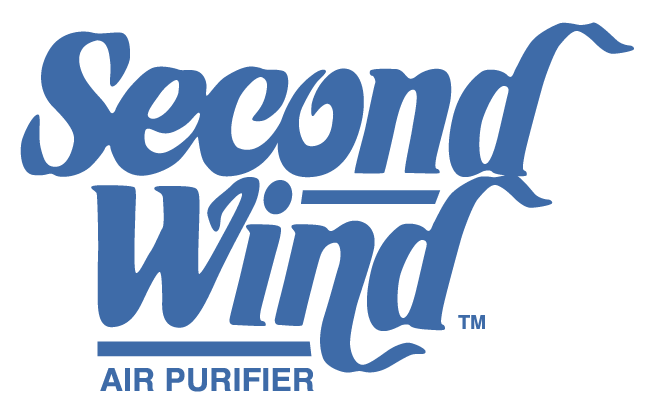
Respiratory and skin allergies are common health conditions that affect a significant portion of the population worldwide. They can have a considerable impact on individuals’ quality of life and overall well-being.
According to the American College of Allergy, Asthma & Immunology (ACAAI), allergies are prevalent amongst a large portion of the population. Allergic rhinitis affects approximately 10-30% of adults and up to 40% of children. Moreover, 8% of adults and 7% of children are affected by asthma.
A skin allergy is caused when one’s immune system reacts atypical to certain substances. One of these skin allergies is atopic dermatitis (eczema), which affects around 10-20% of children and 1-3% of adults. Contact dermatitis affects around 15-20% of the population at some point in their lives.
The impact of respiratory and skin allergies extends beyond physical symptoms. Allergies can have a significant economic burden due to medical expenses, missed work or school days, and reduced productivity. Moreover, allergies can have a substantial impact on mental health, leading to increased stress, anxiety, and impaired sleep.
To address these challenges, smart technology, applications, and IoT (Internet of Things) devices can play a crucial role. By leveraging these technological advancements, individuals can monitor and manage their allergies more effectively.
Importance of good indoor air quality (IAQ)
Having good indoor air quality (IAQ) and creating an allergy-free home directly impacts our health and well-being. Poor IAQ can lead to various respiratory issues and allergies and even exacerbate conditions like asthma. By ensuring clean and allergen-free air indoors, we can breathe easier and reduce the risk of health complications. Managing allergies and asthma becomes much easier in an allergy-free home, minimizing exposure to allergens such as dust mites, pet dander, and mold spores, individuals can experience fewer symptoms and enjoy a higher quality of life. Good IAQ helps preserve the property itself. Dust and pollutants can accumulate over time, leading to damage to furniture, carpets, and other belongings. By keeping the air clean and free from harmful particles, we can protect our investments and maintain a healthier living environment.
Smart tech and allergies
Smart technology offers various innovative solutions to help individuals manage their allergies effectively. It empowers individuals to have greater control over their allergies by providing valuable information, automation, and real-time monitoring. By leveraging these smart solutions, individuals can minimize allergen exposure, track symptoms effectively, and create a more comfortable and allergy-friendly living environment.
Air Purifiers
Air purifiers help remove pollutants and allergens from the air. Essentially, they draw in air and use filters or technologies to catch particles like dust, pollen, pet dander, and mold spores. By reducing the concentration of these allergens in the indoor environment, air purifiers can help alleviate allergies.
Are there any specific features or technologies to look for in an air purifier for allergy relief?
“Studies have shown that air purifiers with HEPA filters successfully capture substantial amounts of airborne allergens, significantly improving the respiratory function of asthmatic allergy sufferers. With fewer allergens circulating in the air, people experience fewer symptoms, easier breathing, and a better night’s sleep.
Note that for a residential air purifier to be effective at getting rid of allergens in the home, it must have a CADR (clean air delivery rate) that matches the size of the room it’s in, and the HEPA filter needs to be cleaned and replaced regularly.
Regardless of how diligently you try to avoid them, a certain number of allergens will always find their way into the house. Using an air purifier to clean the air you breathe can go a long way toward alleviating those troublesome symptoms and improving your quality of life.
Purchasing an air purifier is an investment in your health. HEPA filters are very effective at trapping airborne allergens, and air purifiers with UV technology, such as those from Sanuvox, destroy mold spores, viruses, and bacteria that are also found in the air and can pose significant health risks.”
Paul Rosa from Sanuvox
What types of pollutants or particles can air purifiers effectively remove from the air?
“There are two types of substances in the air: particles and gases (chemicals).
Examples of particles are dust, pollen, mold spores, bacteria, viruses, etc.
Common gases in a home include formaldehyde from furniture or carpeting and nitrogen dioxide which is a gas from the burning of fossil fuels such as vehicle exhaust or from a gas stove.
An air purifier can remove both of these, provided it has the proper filters.
A HEPA filter is rated to remove 99.97% of airborne particles down to 0.3 microns in diameter. A true HEPA filter can remove a high percentage of particles smaller than this; however, the standard is based on the 0.3-micron size.
As a reference point, an N95 mask is rated to remove 95% of particles down to 0.3 microns in size. So, a HEPA filter provides an even higher level of filtration.
While HEPA filters are great at capturing airborne particles, they are not good at capturing gases.
Gases are complex and more difficult to capture. Activated carbon is good at capturing a wide spectrum of gases however is not very effective for certain gases, such as formaldehyde. To compensate for this, it is common for other materials to be used to fill the gaps.”
Peter Mann from Oransi
Are there any considerations for selecting air filters based on the specific allergens individuals are sensitive to?
“The CDC categorizes pollutants into three categories: Germs, Particulates, and Gases, all potential allergy triggers.
HEPA filters address all three. Because HEPA filters are combined with carbon-based materials, they stop mold spores, bacteria, viruses, pet dander, and dust and help to eliminate stubborn gasses from your home. Thus, the air that leaves this type of air purifying system is cleansed and almost totally free from contaminants.
Also effective but less costly is a MERV 11 or 13, 4” to 5” pleated filter, as they remove particulates as small as 0.3 microns (A human hair is 75 microns). Some manufacturers add carbon to pleated filters to address gases.
UV air purification is ideal for gas and germ inactivation and is often paired with a home’s filtration system for complete contaminant treatment. Humidification control is also essential, as proper humidity levels (40-60%Rh) keep pollutants in check. Outside this range, bacteria, viruses, fungi, mites, and allergy triggers increase. Comprehensively, air filters, humidity control, and UV disinfection best remove airborne allergens.
Lastly, because we travel to different rooms in our homes, whole house treatment ensures the best results (as opposed to room systems that only treat one room).”
J. Paige Freeland from General Filters
Thermostats
With the use of thermostats, people can create a comfortable and allergen-friendly environment. An optimal temperature and humidity level prevents the growth of mold and reduces dust mites. Both of which can trigger allergies.
Vacuum Cleaners
By maintaining your home clean and removing dust from floors, carpets, and upholstery, you can reduce allergens in the indoor environment. Vacuum cleaners are effective in capturing and removing dust, pollens, and other allergens.
Are there specific features to look for in vacuum cleaners or steam cleaners that make them more suitable for allergy sufferers?
“A vacuum steamer (steamer with extraction function) is better for allergy sufferers.
A steam cleaner with extraction, or steam vacuum, combines steam cleaning with the ability to extract dirt and moisture from surfaces.
Regular steam cleaners focus solely on using steam to clean surfaces and lack the extraction feature.
Specific features to look for in vacuum cleaners or steam cleaners for allergy sufferers:
- HEPA Filtration
- Sealed System
- Allergen-Blocking Bags or Canisters
- Anti-Allergen Treatments
- Steam Temperature and Pressure
- Attachments and Tools”
Lev Tretyakov from Fortador
What are the benefits of using HEPA filters in cleaning devices for allergy relief?
“HEPA filters, which stand for High-Efficiency Particulate Air filters, are widely used in cleaning devices for allergy relief due to their numerous benefits. Here are some of the key advantages of using HEPA filters:
Filtration Efficiency: HEPA filters are designed to capture particles as small as 0.3 microns with an efficiency of 99.97%. This includes common allergens such as pollen, pet dander, dust mites, mold spores, and some bacteria and viruses. By effectively trapping these particles, HEPA filters help improve indoor air quality and reduce allergy symptoms.
Allergen Reduction: HEPA filters are highly effective at reducing allergens in the air. They can remove microscopic particles that are known triggers for allergies and asthma.
Effective Air Circulation: HEPA filters can be found in a variety of devices, including air purifiers, vacuum cleaners, and HVAC systems. Incorporating these filters into such devices, they help circulate clean air throughout the space, ensuring that the air you breathe is consistently purified.
Long-lasting Performance: HEPA filters are known for their durability and long lifespan. With proper maintenance and regular cleaning or replacement per the manufacturer’s instructions, HEPA filters can provide effective filtration for an extended period, making them a cost-effective choice for allergy relief.
It’s important to note that while HEPA filters are highly efficient in capturing particulate matter, they may not address all allergens or provide relief for all types of allergies. Other factors like proper ventilation, reducing exposure to specific triggers, and maintaining overall cleanliness in the environment can also contribute to allergy relief. It’s advisable to consult with a healthcare professional for personalized advice and to address specific allergy concerns.”
Vincent from Protech Allergies
Humidifiers
Humidifiers help to maintain optimal humidity levels in indoor environments. The ideal humidity level ranges between 30% and 40%. Humidifiers alleviate some symptoms associated with dry air that can worsen allergies. Dry air causes irritations in the nasal passages, throat, and skin.
Recommendations for humidifier use for allergy sufferers
“Winter is a season when the indoor air can become very dry and cause irritated sinus passageways and dry skin. Humidifier use in this setting can help to soothe dry and irritated sinus passages. Cool mist humidifiers can be helpful in loosening nasal secretions. We must be careful with humidifier use, though, as patients with indoor allergies, such as allergies to dust and mold, can actually see a worsening of their symptoms from humidifier use. This is because dust mites thrive when there is moisture in the air. We recommend trying to keep the humidity level in the home between 40-50%, and levels can be monitored with a hygrometer. Patients with mold allergies also need to be cautious about mold spores. The filter in the humidifier should be cleaned and changed on a regular basis to prevent mold growth on the unit, which could blow spores into the home. It’s important to clean the humidifier after each use according to the manufacturer’s instructions. We recommend choosing a quiet humidifier that can be cleaned easily, as they need to be maintained and cleaned regularly to prevent the growth of bacteria and fungi. Always talk to your doctor before using a humidifier.”
Dr. Shaan Waqar from ENT and Allergy Associates
Allergen Monitors
Allergen monitors are designed to detect and measure the presence of allergens. It helps to provide real-time information about allergen levels. By detecting specific allergens, such as pollen, allergen monitors help people to take appropriate measures and reduce their exposure to allergens.
How can an allergy symptom tracker help identify triggers and patterns related to allergy symptoms?
“An allergy symptom tracker can help identify triggers and patterns related to allergy symptoms when used regularly and when the symptom tracker includes additional data, like environmental and nutrition information. Allergy symptoms will fluctuate depending on your environment if they are environmental allergies and consumption of food if they are food sensitivities. Tracking your symptoms allows you to draw unbiased conclusions from your data. For example, tracking the prevalence of sneezing or runny nose symptoms regularly will allow you to compare it to environmental variables like pollen or air particulate matter. Perhaps your allergy symptoms are more active during times of increased levels of ragweed pollen but not during times of increased tree pollen. Similarly, you can learn if you are developing a food allergy or sensitivity by tracking digestion-related symptoms or skin rashes and comparing them to your nutritional data. Identifying a gluten sensitivity or a more severe condition like Celiac is possible by properly tracking allergy symptoms and nutritional data.”
RiAnn Bradshaw from Live Learn Innovate Foundation
Ensure a good user experience
To ensure a good user experience with smart gadgets for allergy management, it is important to conduct research before purchasing, considering the installation process, compatibility, and user-friendly apps. Selecting gadgets that fit one’s budget and needs is crucial. Additionally, a stable internet connection is essential for seamless communication between devices, quick response times, and uninterrupted access to features. Regular software updates should be prioritized to improve performance and security to maximize the effectiveness of smart gadgets in allergy management.
Leveraging smart technology and IoT devices for allergy management offers numerous benefits in creating an allergy-free home and maintaining good indoor air quality. By utilizing allergy tracking apps, air quality monitoring, smart home integration, wearable sensors, and allergen detection, individuals can better manage their allergies, reduce symptoms, and improve their overall well-being. However, it is important to conduct research, consider budget and needs, ensure a good internet connection, and regularly update software for a seamless user experience. With the right approach and utilization of smart technology, individuals can enhance their allergy management strategies and create a healthier and more comfortable living environment.








